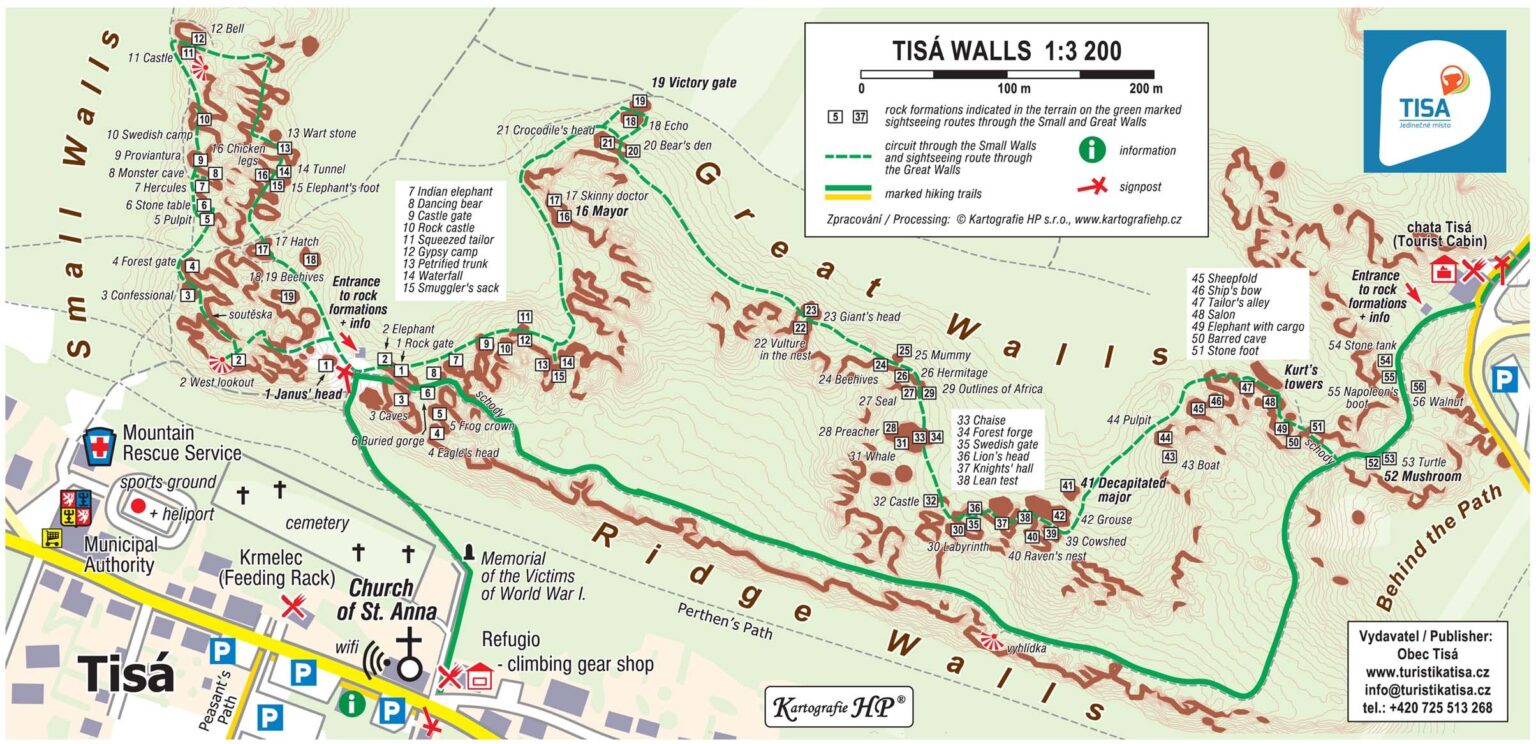Tisá Walls
Guide
You can find a guide – trip through the Little and Great Walls within the section “Hiking Trips”.
Interactive map
You can open the map at mapy.cz and save it in your backpack.
A unique rock city in the heart of the Elbe Sandstones
Discover the fascinating world of sandstone towers, rock windows, overhangs, and narrow passages. An educational trail will guide you through the most beautiful creations nature has made in this corner of the world.
Opening Hours and Entrance Fees
The educational trail and Tiské Stěny sightseeing circuit are open daily. Entry is possible only with a valid ticket, even outside of ticket office hours.
You can buy tickets conveniently online, from anywhere, without waiting, and with guaranteed availability.
At the ticket offices (if tickets are available):
- At the Info Centre near St. Anne's Church
- At the ticket office at Skalní náměstí (follow the green trail from St. Anne's Church)
- At the ticket office near the Tourist Chalet
- Payment is possible with cash or card.
Ticket prices:
Adults: 100 CZK
Children, students, seniors: 50 CZK
Family ticket (2 adults + 3 children): 250 CZK
The complete price list can be found here.
Route Description
The Tiské Stěny are divided into two parts — the Malé Stěny (Small Walls) and the Velké Stěny (Great Walls). The circuits are approximately 3.5 km long, and we recommend setting aside at least 2 hours to walk them. You can spend as much time as you like in the rock city; it's possible to exit the circuit and return.
What you'll see on the trail:
Viewpoints, passages, overhangs, rock squares, as well as mushrooms, towers, columns, and other formations.
Thematic stops on the educational trail.
The educational trail is marked with a white square with a green diagonal stripe, and there is also a green tourist trail along the ridge of the Velké Stěny connecting the entrance area with the eastern end at the Tourist Chalet.
Tip for Visitors
Did you know the rock formations have names?
Explore the rocks with a free map you can pick up at the ticket offices or the info centre. It will help you recognise formations like the Doctor, the Mayor, the Elephant, or the Turtle, and you'll experience the Test of Slimness and get all the way to Africa.
A detailed guide to the Small and Great Walls can also be found in the Hiking Trips section.
History and Geology
The Tiské Stěny belong to the oldest tourist areas in the Elbe Sandstones. As far back as 1828, they were mentioned in a guide to the Děčín estate, which includes one of the oldest illustrations of the local rock formations, the Doctor and the Mayor.
In earlier times, it was recommended to hire a guide when visiting the rock city. They would point out formations along the way to spark the visitor's imagination. The tradition of naming the rocks continues, and the most well-known names have been preserved to this day.
Through the Seafloor Landscape
The current appearance of the Tiské Stěny is the result of geological processes that have lasted for millions of years. The entire Elbe Sandstone area was formed approximately 90 million years ago during the Cretaceous period, when the whole region was covered by a sea.
Layers of sand were deposited on the seafloor and gradually solidified into sandstone. After the sea receded, these deposits began to crack, and due to the effects of erosion, water, frost, and wind, they were shaped into the formations we admire today: rock cities, towers, canyons, and jagged walls. The diverse terrain, natural variety, and human imagination have given this place its unique character.



